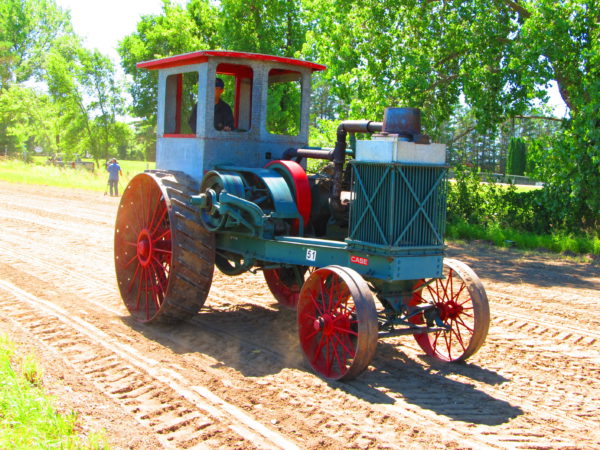The Museum has a total of four 20-40 Case Kerosene engines in the collection which is a strong indication that the 20-40 design was successful and sold in reasonable quantities over its production period (1912 to 1919).
This engine was donated to the Museum by Gordon Cram of Darlingford, Manitoba.
A comparison with the Hunter 20-40 shows some interesting design changes. The radiator on this engine is a much different design. The exhaust is still ducted into the top of the radiator to create a draft which draws cool air upwards through the tubes, but on this engine the radiator is made up of a number of vertical tubes connecting a bottom tank and a top tank. The tubes are arranged in a square but with no tubes in the centre. The top tank had a hole in the centre of it and the exhaust was ducted into a short stack immediately above this hole. As the exhaust gases escaped upwards, cool air was drawn through the tubes and vented upwards along with the exhaust gases. The Hunter engine’s radiator is very similar to a modern radiator but with no fan behind it. Instead the exhaust is also used to create a draft which pulls cooling air through the radiator.
As well on the Hunter engine the exhaust, before being turned into the top of the radiator, runs through a heavy vertical casting. In this casting is an air intake pipe which is seperate from the exhaust. This device would have heated the incoming air to the carburator which would have aided cold weather operation of the engine, especially as the fuels in use at the time were not of great quality. On the Cram engine, this casting is absent and there is no means to heat the carburator air if so desired.
On the Cram engine the cab is made out of galvanized steel and the cab roof does not extend over the engine.
Case began building 20-40 tractors in 1912 with a Case 20-40 entered into the 1912 Winnipeg tractor trials. The style of radiator on the Cram engine dates the Cram engine as relatively early in the 20-40 production run.



